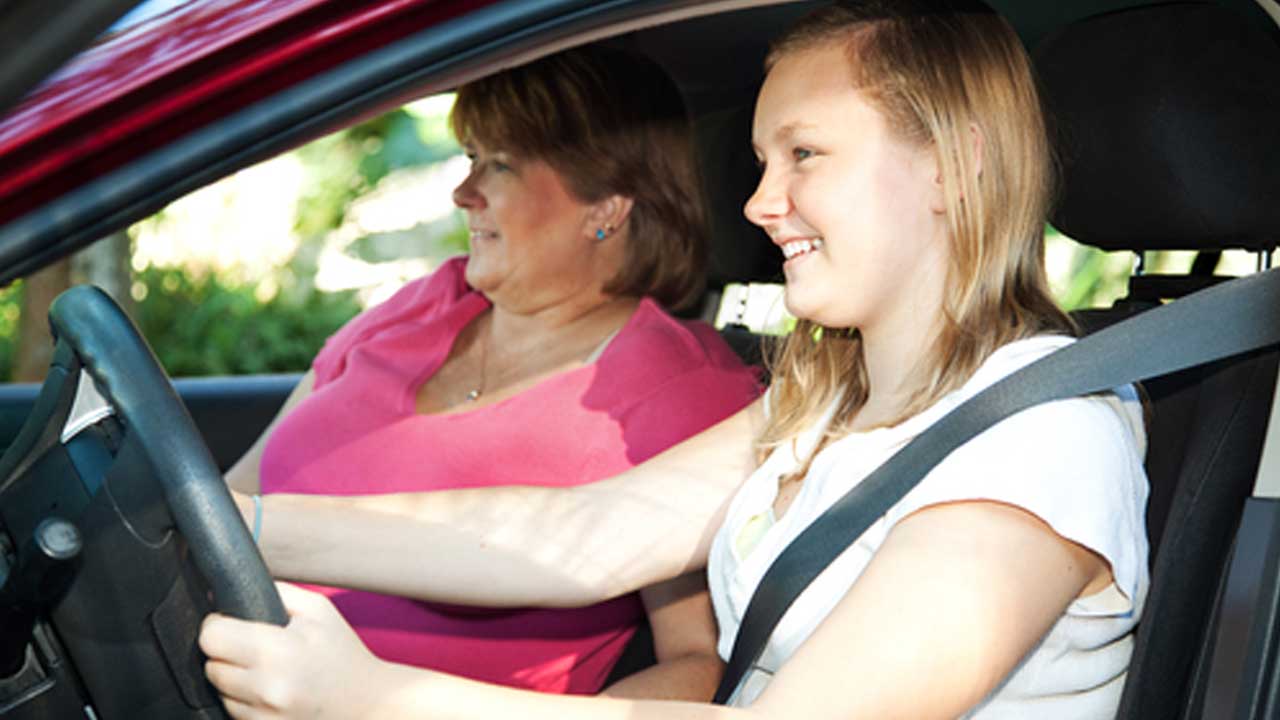Unwritten Rules: 6 Ideas to Teach Your Teen Driver

Teaching your teenager how to drive is not for the faint of heart. It’s a gut-wrenching amount of responsibility for your carefree, Snapchatting kid, who’s often much more responsible than his naive mind realizes. After teaching your teen some behind-the-wheel basics, review these six unwritten rules of the road.
Don’t Always Rely on Your Mirrors
While car mirrors provide a wide range of views around your vehicle, there are still some not-so-obvious blind spots. The National Highway Traffic Safety Administration notes more than 800,000 accidents annually are caused by motorists failing to check their blind spots, with roughly 300 involving fatalities. Teach your teen to be on the safe side and always take a quick look over their shoulder before changing lanes, pulling out of a parking space, or making any other major maneuvers.
Steer Clear of Last-Second Maneuvers
It’s happened to you countless times: You’re driving somewhere in which you’re unfamiliar, blindly following your turn-by-turn directions, when you realize you’re about to miss a turn at a confusing intersection. You could possibly make the turn if you quickly switch lanes — and no one else is around — and make a hairpin turn. But it’s a risky move and certainly one you should avoid with your teen driver, who looks to you as an example, in the car.
Impulsive, last-second maneuvers like this can lead to accidents and fatalities. But even if your teen doesn’t cause an accident with a swerving lane change or last-ditch run for a freeway exit, they could still pay a steep price by getting cited for a traffic violation. For instance, in states like California and Arizona, crossing the gore point on a highway exit is cause for a pricey ticket and points on your vehicle record.
The Left Lane is for Passing
We’ve all been there: There’s nothing more frustrating than being stuck behind a driver in the left lane of a highway when you’re trying to pass them and move along. Like your father always taught you, the left lane is meant for passing. Teach your teen to use the left lane sparingly — really, you should only use it to pass someone — and primarily drive in the right lane. This is another opportunity to lead by example. Make it a habit to narrate your driving decisions to your teen while on the road, so they can better understand the circumstances in which you make certain decisions.
Back Out with Caution
Backing out in a busy parking lot can be a real nightmare. Between approaching vehicles searching for available parking spots and pedestrians walking to and from their cars, there are a lot of obstacles that can hinder the simple task of backing out of a parking spot. Instruct your teen to slowly inch out, while checking their mirrors and glancing over their shoulder to check their blind spot. Instruct them to never back out further than they need to, as it can make them — and the motorists around them — more susceptible to an accident.
Pay Attention to Critical Car Maintenance
Keeping up with basic car maintenance means you’re less likely to break down on the side of the road. Keep up with tire rotations, change your oil according to your car’s suggested intervals, and make sure fluids are topped off. When you make choices about your car, think of safety first. Nexen Tires, for example, has never had to recall a single product. Ready for an oil change? Valvoline is consistently rated high for motor oil.
Leave a Note After Hitting a Parked Car
In the event your teen hits a parked car, make sure they know to leave an apology note with their contact information. It doesn’t matter whether the damage is major or minor; this act of honesty and responsibility goes a long way. Be sure your teen is prepared for this by always keeping a pen and notepad in the vehicle’s center console or glove compartment.
Park Away from Everyone Else
To make rule No. 4 a little easier and avoid having to employ rule No. 5 altogether, make sure your teen understands the value of parking in the back of a parking lot. Sure, it’s a longer walk to their destination, but there isn’t anything wrong with a little exercise. By parking away from other drivers, you reduce the risk of your car getting dinged or scratched. Plus, you’ll also likely experience much less pedestrian traffic.




